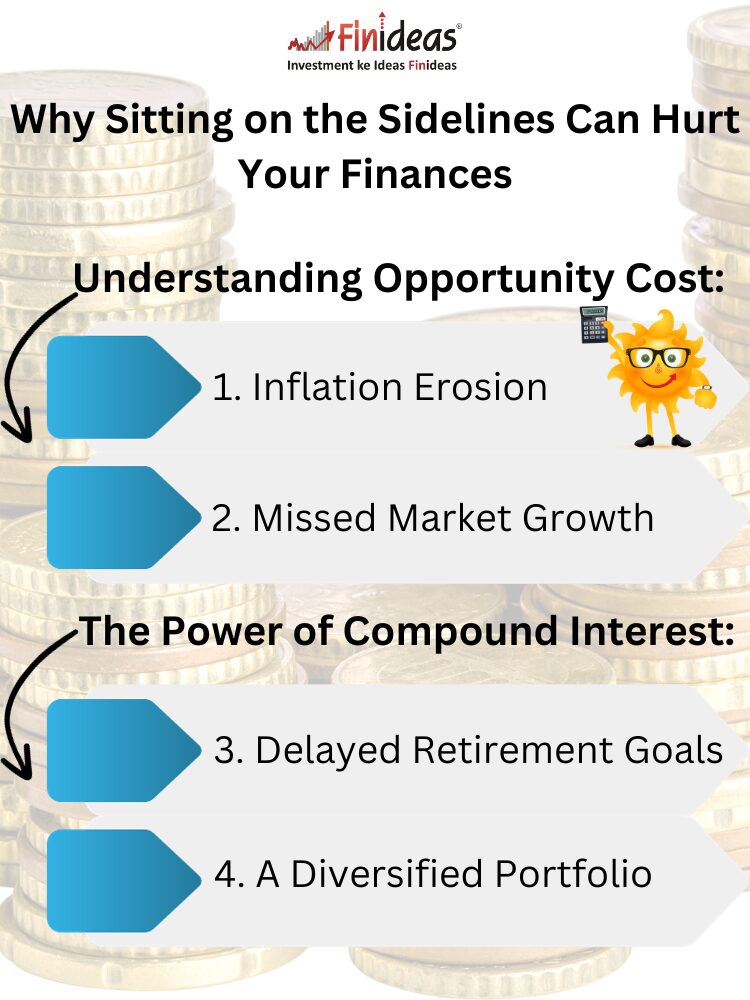The Opportunity Cost of Not Investing: Why Sitting on the Sidelines Can Hurt Your Finances
Introduction:
Greetings, savvy investors! As your trusted financial advisor, I’m here to shed light on a crucial aspect of wealth management that often goes overlooked – the opportunity cost of not investing. In today’s fast-paced financial landscape, sitting on the sidelines can have significant repercussions for your long-term financial well-being. Let’s explore why being an inactive investor might be more detrimental than you think.
Understanding Opportunity Cost:
Inflation Erosion:
One of the most significant downsides of not investing is the erosion of purchasing power due to inflation. Money that remains idle loses its value over time, as the cost of goods and services steadily rises. By not investing, you’re essentially allowing your hard-earned money to stagnate, making it more challenging to maintain your desired lifestyle in the future.
Missed Market Growth:
Financial markets, despite their occasional volatility, have historically shown an upward trajectory. Not investing means missing out on potential market growth and the compounding effect that can significantly boost your wealth over the long term. The earlier you start investing, the more time your money has to grow and multiply.
The Power of Compound Interest:
Delayed Retirement Goals:
For those saving for retirement, the opportunity cost of not investing is particularly pronounced. The magic of compound interest can work wonders when given time. Delaying your investment journey means your money has less time to compound, potentially forcing you to save larger sums later on to catch up with your retirement goals.
A Diversified Portfolio:
Smart investors understand the importance of a diversified portfolio in mitigating risks. By not investing, you miss the chance to allocate your funds across various asset classes, reducing risk and potentially increasing returns. Diversification is a key strategy for long-term financial success. If you are interested in investing in diversified portfolios then you must know about Index Long Term Strategy.
Question for You:
Now that we’ve explored the opportunity cost of not investing, I’m curious to hear your thoughts. Are there specific concerns or barriers that have kept you on the sidelines? What investment strategies are you considering to overcome these challenges and start building your wealth? Share your insights and questions in the comments below – let’s start a conversation about securing a financially sound future!
Conclusion:
In the dynamic world of finance, the cost of not investing goes beyond just the numbers. It’s about securing your financial future, beating inflation, and realizing your long-term goals. As your financial advisor, I encourage you to assess your investment strategy, consider the opportunity cost of remaining inactive, and take steps towards making your money work for you. Remember, time is a powerful ally in the world of investing – don’t let it slip away!
Happy Investing!
This article is for education purpose only. Kindly consult with your financial advisor before doing any kind of investment.


